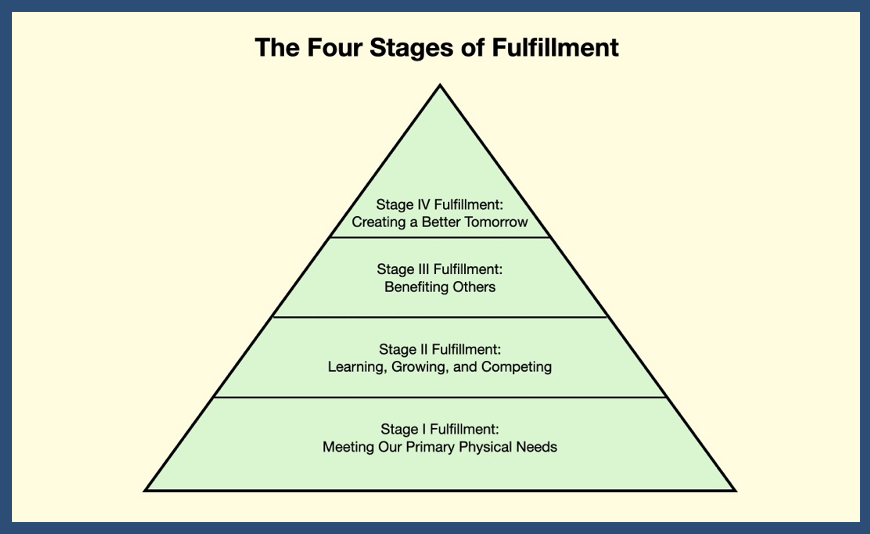Assessing Leadership Maturity/Conscious Restraint

Leadership involves recognizing the long-term consequences of short-term decision-making. This skill sets mature individuals—those who practice conscious restraint to resist immediate gratification, choosing instead to wait for long-term rewards—apart from the immature.
Our last two blogs explored our behaviors and the extent to which we are assertive, sociable, calm, or conforming. Understanding these behaviors is essential as we aim to gain a deeper insight into ourselves and others.
That said, the most important vector we assess is Vector 5—Conscious Restraint. For what purpose are we using the behaviors previously described? Are they for me or the team? Adam Grant describes the highs and lows of this vector in his book Give and Take.
We share the same concept in our Four Stages of Fulfillment, briefly described in this diagram:

Conscious Restraint
Under pressure, we all default to one point on the Conscious Restraint vector. In our infant years, it’s about us and our comfort in being warm and fed with enough sleep. As we grow into adolescence, our fulfillment becomes more about our accomplishments versus those of others. This is appropriate for this stage—we are building competencies for the benefit of others in the future. However, those who choose to stay at this stage of fulfillment are in the lose-lose stage of life. It’s just a matter of time before they realize they have been beaten and cannot be who they think they need to be.
As adults, we realize greater fulfillment in serving and benefiting others than in our accomplishments. The ultimate stage of life is based in faith that the world will be a better place because of the life we have lived.
Where might you be on this vector when under pressure? Behaviors below 3 and above 7 are easily noticeable.

We may not be able to teach maturity, but we can assist people in recognizing their position on the journey to becoming their ideal selves. When explaining this concept to a client who works on Wall Street, he remarked, “You have no idea how reassuring this is. In the office, it’s about who wears the most expensive tie or suit. When I drive home to New Jersey, it’s about who has the most manicured lawn and the newest polished cars in the driveway. I’ve never felt this was important; I was always the odd one!”
If our why is that we use our behavior to serve the team, our actions can be felt to be supportive and helpful, even if they are assertive and anxious. Conversely, if our purpose in life is self-centered, our behavior may come across as self-serving, resulting in distrust.
We hope this has provided insights into respecting yourself and understanding the natural behaviors of others as you strive to collaborate. Our behavior reflects how we’ve learned to survive up to this point. To lead a purposeful life, we must adjust our actions to be more intentional. Over time, we tend to progress on the Conscious Restraint vector.
Next week, we will share the look and feel we get from my combination of these factors. You will recognize them right away
Does this resonate with you?






